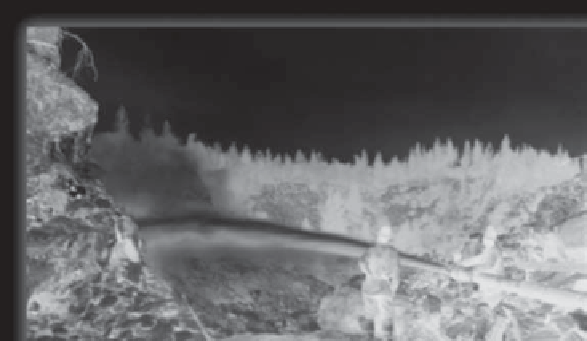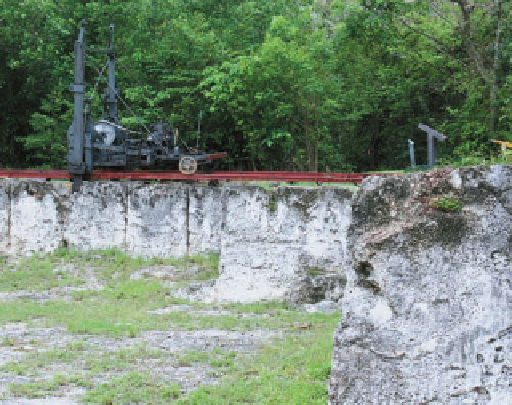Geology Reference
In-Depth Information
◗
Figure 24.6
Humans as Geologic Agents
a
A gypsum mine at Shoals, Indiana.
b
This limestone quarry, now abandoned, is at Windley Key
Fossil Reef Geological State Park in Florida.
lic mining was discontinued and the streams and rivers returned
to their pre-1850 levels. Nevertheless, the scars on the hillsides
and the debris of hydraulic mining are still visible in many areas
(Figure 24.7b).
Most human-induced erosion takes place at construc-
tion sites, agricultural lands, and deforested areas that are
mostly in the less-developed countries. If we consider the
long-term natural erosion rate during the last 3 million
years, the rate is about 65 m per million years, whereas
for agricultural lands now, the rate is 700 to 1400 m per
million years. Of course, these fi gures are averages and the
erosion rate at a particular location may be much less or
much more than these fi gures indicate. Nevertheless, ex-
cept for some areas of rapid deposition, as on river deltas,
much of the world's soil is being lost much faster than it
forms.
◗
Figure 24.7
Environmental Disruption from Gold Mining
a
Hydraulic mining in which jets of high-pressure water from a large nozzle
called a monitor washed gold-bearing sand and gravel into sluices. Hydraulic
mining was effi cient from the mining point of view, but caused considerable
environmental damage.
b
This bare hillside near Cherokee, California, was
blasted with high-pressure water during hydraulic mining
more than a century ago.






Search WWH ::

Custom Search